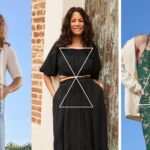From Punk to Preppy: Subcultures That Shaped Fashion
Fashion is like a giant conversation. Sometimes, the loudest voices come from famous designers or big brands. But often, the most exciting and long-lasting changes start in unexpected places: with subcultures. These are groups of people, often young, who share unique interests, beliefs, or lifestyles, and who express themselves through distinctive styles of music, art, and, of course, fashion.
Subcultures often dress in ways that go against the mainstream, creating looks that are bold, rebellious, or simply different. Over time, these “underground” styles often become popular and influence mainstream fashion. This guide will take you on a simple journey through some key subcultures and show how they completely changed the way we dress.
Why Do Subcultures Influence Fashion So Much?
- Rebellion and Identity: Subcultures often form as a way for people (especially youth) to express their individuality and rebellion against mainstream society or older generations. Clothing becomes a powerful uniform of this identity.
- Authenticity: Their styles are often developed organically on the streets, not in design studios. This authenticity makes them feel real and relatable.
- Creativity and DIY: With limited money, subcultures often create their looks by customizing, thrifting, and DIYing clothes, leading to highly creative and unique styles.
- Music Connection: Many subcultures are tied to specific music genres (punk, grunge, hip-hop), and the music and fashion become inseparable.
- Evolution: As a subculture grows, its style might get noticed by designers, adapted, and then spread to a wider audience.
1. The Punks (Mid-1970s): Rebellion with Safety Pins
The Core: Punk was a loud, angry, and rebellious movement that started in the mid-1970s, mainly in the UK and USA. It was a reaction against polished rock music and mainstream society. The Fashion: Punk fashion was all about shocking, deconstructing, and challenging norms. * DIY Aesthetic: Clothes were often ripped, torn, and held together with safety pins. T-shirts were crudely customized with band names or protest slogans. * Anti-Establishment Symbols: Swastikas (used to shock, not support Nazism), anarchy symbols, chains, bondage straps, and razor blades were common details. * Dark Colors: Lots of black leather jackets, ripped fishnet stockings, dark makeup. * Hair: Spiked hair (often dyed bright colors like pink, green, blue), Mohawks. * Key Figures: Malcolm McLaren and Vivienne Westwood’s boutique “SEX” in London was a key hub, selling shocking punk clothing. Its Impact: Punk’s raw, rebellious energy directly influenced designers to experiment with deconstruction, distressing, and using unexpected materials. It also popularized DIY fashion and showing individualism through clothing. Elements of punk, like safety pins and ripped jeans, are still seen in fashion today.
2. The Preppies (Late 1970s – 1980s): Refined, Clean, and Classic
The Core: “Preppy” style originated from the clothing worn by students at expensive, elite preparatory schools (hence “preppy”) in the northeastern United States. It was about looking clean, classic, and traditionally wealthy. The Fashion: Preppy style was the opposite of punk – neat, ordered, and traditional. * Classic Silhouettes: Polo shirts, button-down oxford shirts, chinos, pleated skirts, khaki pants, cable-knit sweaters. * Colors: Crisp colors like navy, white, hunter green, red, and pastel shades. * Fabrics: High-quality natural fabrics like cotton, wool, and linen. * Brands: Ralph Lauren, Lacoste, Tommy Hilfiger, Brooks Brothers. * Accessories: Loafers, boat shoes, argyle socks, pearl necklaces, headbands. Its Impact: Preppy style became a hugely popular mainstream aesthetic, influencing brands globally. It brought timeless, well-made basics into fashion and remains a strong undercurrent in classic American sportswear. It showed that style could be about understated quality and tradition.
3. The Goths (Early 1980s): Dark Romance and Melancholy
The Core: Emerging from the post-punk scene, Goth subculture was drawn to dark romanticism, Victorian influences, horror, and melancholy. It was linked to Goth rock music. The Fashion: Goth style is characterized by dark, dramatic, and often ornate clothing. * Colors: Almost exclusively black, with touches of deep purple, burgundy, or dark blue. * Fabrics: Velvet, lace, fishnet, leather. * Silhouettes: Victorian-inspired elements like corsets, long flowing skirts, ruffled shirts, cloaks. Bondage elements from punk also influenced early goth. * Makeup & Hair: Pale skin, dark eyeliner, dark lipstick, dyed black hair (often teased or spiked). * Accessories: Silver jewelry (often with occult symbols like crosses or ankhs), chokers, combat boots. Its Impact: Goth style introduced a dramatic, romantic, and dark aesthetic into fashion. It influenced gothic-inspired collections in high fashion and brought back elements like lace, velvet, and dramatic silhouettes. Its emphasis on self-expression through a consistent, unique aesthetic continues to inspire.
4. The Grunge Kids (Late 1980s – Early 1990s): Anti-Fashion and Lived-In Look
The Core: Grunge originated in the Pacific Northwest (especially Seattle) with bands like Nirvana. It was an anti-establishment, anti-consumerist movement that rejected polished fashion and embraced a raw, “unwashed” aesthetic. The Fashion: Grunge fashion was deliberately messy, relaxed, and often appeared effortless. * Layering: Oversized flannel shirts (often worn unbuttoned over t-shirts), ripped jeans, band t-shirts. * Colors: Muted, earthy tones – faded reds, greens, browns, blacks. * Silhouettes: Loose, baggy, deconstructed. * Footwear: Combat boots (like Doc Martens) or worn-out sneakers. * Hair: Often messy, unkempt. * Key Designer: Marc Jacobs’ 1993 Perry Ellis grunge collection (which got him fired!) was a famous moment where a subculture directly hit the runway, controversial at the time. Its Impact: Grunge revolutionized fashion by popularizing the “anti-fashion” aesthetic. It made ripped jeans, oversized clothing, and thrift store finds cool. It proved that comfort and a lived-in look could be stylish, deeply influencing casual wear and streetwear for decades.
5. The Hip-Hop Heads (1980s – Present): Street Style and Brand Power
The Core: Hip-hop culture emerged from African American and Latino youth in the Bronx, New York, focusing on rap music, DJing, breakdancing, and graffiti art. Fashion was central to its identity. The Fashion: Hip-hop fashion has evolved dramatically but always emphasizes status, self-expression, and street credibility. * Early Era (80s): Tracksuits, oversized gold chains, Kangol hats, unlaced sneakers (Pumas, Adidas). * 90s: Baggy jeans, oversized sports jerseys, puffer jackets (e.g., Starter jackets), Timberland boots, bandanas. Emphasis on designer labels (Tommy Hilfiger, Ralph Lauren) adapted for the street. * 2000s onwards: Bling (heavy jewelry), expensive streetwear brands, athletic wear, luxury brand collaborations (e.g., Louis Vuitton). Key Figures: Artists like Run-D.M.C. (Adidas), LL Cool J (Kangol, Fila), and later Puff Daddy (Sean John) directly influenced fashion. Its Impact: Hip-hop transformed fashion by bringing streetwear to the forefront and democratizing luxury. It showed the power of branding and collaborations between music and fashion. Its emphasis on oversized silhouettes, sneakers, and casual luxury continues to dominate global fashion trends.
6. The Skaters (1970s – Present): Casual, Durable, and Cool
The Core: Skateboarding culture, originating in California, values freedom, individuality, and defying gravity. Clothing needed to be comfortable, durable, and allow for movement. The Fashion: Skater style is inherently casual, functional, and cool. * Loose-Fitting: Baggy jeans, cargo pants, oversized t-shirts, hoodies. * Durable Fabrics: Canvas, denim, sturdy cotton. * Footwear: Skate shoes (Vans, Converse, Etnies, Nike SB) with flat soles for grip. * Accessories: Beanies, baseball caps, backpacks. Key Brands: Vans, Thrasher, Supreme (which started as a skate brand). Its Impact: Skater style heavily influenced casual wear and streetwear. It popularized sneakers, hoodies, graphic t-shirts, and loose-fitting clothing in mainstream fashion. Its emphasis on comfort and practicality made it a timeless aesthetic for youth culture worldwide.
Conclusion: The Street is the Ultimate Runway
Looking at these subcultures – from the rebellious safety pins of punk to the refined polos of preppy, the dark romance of goth, the raw authenticity of grunge, the brand power of hip-hop, and the laid-back cool of skate culture – it’s clear that fashion is a living, breathing story. These groups, often starting on the fringes of society, created powerful visual identities that eventually reshaped how we all dress.
The influence of subcultures shows us that true fashion innovation often comes from the bottom up, from real people expressing themselves through their clothes. The street is often the ultimate runway, where new ideas are born, tested, and eventually adopted by the world. So, the next time you see a unique style, remember that it might just be the beginning of the next big thing that reshapes our wardrobes for years to come.


